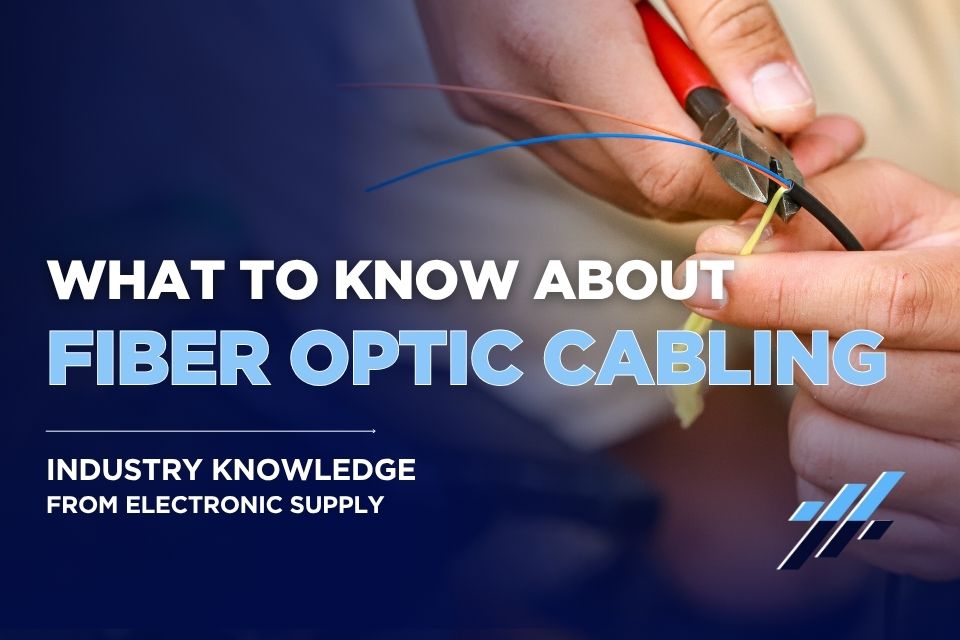In today’s fast-paced business world, network performance can make or break your operations. If you’re grappling with lagging internet speeds, dropped connections, or outdated infrastructure, you’re not alone. As more companies adopt bandwidth-intensive applications, the demand for high-speed, reliable networks has surged. This article will help you understand why fiber optic cabling is a game-changer for commercial networks and guide you through selecting, installing, and maintaining the right solution for your business.
Understanding Fiber Optic Cabling
What is Fiber Optic Cabling?
Fiber optic cabling is a network cable that uses strands of glass or plastic fibers to transmit data via light signals. Unlike traditional copper cabling, which uses electrical signals, fiber optics offer significantly greater speed and bandwidth. Fiber optic networks are now a preferred option for commercial buildings, data centers, and enterprises seeking consistent performance.
Fiber optics operate by reflecting light pulses through the core of the cable. These light-based transmissions result in faster and more reliable data transfer, even over long distances. The technology supports various optic cabling standards, ensuring compatibility with a range of applications.
Comparison with Traditional Copper Cabling
Copper cables transmit data via electrical signals and are prone to electromagnetic interference (EMI), signal degradation over distance, and slower speeds. Fiber optic cables, in contrast, offer immunity to EMI, higher cable data transfer speeds, and longer transmission distances without signal loss. Coaxial cable fiber optic hybrids are sometimes used in legacy networks, but most new installations now favor pure fiber optic infrastructure.
Advantages of Fiber Optic Cabling
- Higher Bandwidth Capabilities: Fiber optics can handle larger amounts of data compared to copper, supporting modern applications like video conferencing and cloud computing. Fiber optic cables enable smooth data flow even during peak hours.
- Faster Data Transmission Speeds: Typical fiber optic speed tests show rates up to 10 Gbps or more, vastly surpassing traditional Ethernet cable performance. This results in better download speeds and reduced latency.
- Improved Reliability and Reduced Signal Degradation: Fiber is not susceptible to temperature changes, moisture, or electromagnetic interference.
- Enhanced Security: Optical data transmission is much harder to intercept, making fiber optics ideal for sensitive business operations and secure optic networks.
- Future-Proof Infrastructure: Fiber optic cabling can scale to accommodate future internet speeds and bandwidth demands, unlike copper.
Types of Fiber Optic Cables
Single-Mode vs. Multi-Mode Fiber
Single-mode fiber uses a narrow core and a single light path, making it ideal for long-distance transmissions. Multi-mode fiber uses a wider core that allows multiple light paths, suitable for shorter distances like within buildings.
- Applications: Single-mode is commonly used for telecom and cable TV; multi-mode is used in LANs, structured cabling systems, and data centers.
- Cost & Performance: Single-mode tends to be more expensive but supports longer distances and higher speeds.
Armored vs. Non-Armored Fiber Cables
- Armored Cables: These include a protective metal layer to guard against physical damage and rodents. Perfect for industrial and outdoor settings.
- Non-Armored Cables: Lighter and more flexible, suited for indoor and less hazardous environments.
- Installation Considerations: Armored cables require careful handling and may need specialized tools for cutting and splicing.
Installation Best Practices for Fiber Optic Cabling
Planning Your Fiber Optic Network
- Assess Your Needs: Evaluate current and future bandwidth requirements and device count. Consider working with an internet provider that offers fiber internet services.
- Design an Efficient Layout: Include considerations for fiber optic backbone routes, distribution points, and redundancy.
- Professional Installation: Hiring a certified fiber optic contractor ensures compliance with standards from organizations like the American National Standards Institute (ANSI). Choose technicians with fiber optic certification for best results.
Installation Techniques and Tools
- Essential Tools: Fusion splicers, OTDR testers, cleavers, and cable strippers.
- Step-by-Step Process:
- Run conduit and install innerduct.
- Pull or blow in the fiber optic cable.
- Splice fibers using fusion splicing.
- Test connections using a fiber optic speed test or OTDR.
- Avoid Pitfalls: Don’t exceed bend radius, avoid excessive pulling tension, and always label fiber ends. Proper optic cable management is key to minimizing signal loss.
Maintenance and Troubleshooting of Fiber Optic Networks
Regular Maintenance Practices
- Routine Inspections: Visually check for signs of damage, especially in outdoor runs. This helps preserve your fiber optic infrastructure.
- Cleaning: Use fiber cleaning kits for ferrule and adapter connections.
- Maintenance Schedule: Inspect and test cables semi-annually to ensure optimal performance. Proactive maintenance supports consistent cable fiber optic performance.
Troubleshooting Common Issues
- Common Problems: Signal loss, increased attenuation, or complete signal failure.
- Troubleshooting Steps:
- Perform a visual inspection.
- Run OTDR or power meter tests.
- Inspect connectors and splices.
- Replace damaged sections if necessary.
- When to Call a Pro: Persistent issues or those involving buried cable fiber optic lines may require a certified fiber optic technician with proper diagnostic tools.
Making Informed Decisions for Your Commercial Network
Fiber optic cabling is no longer a luxury. It’s a necessity for businesses aiming for top-tier internet speeds, reliability, and security. From its high bandwidth and fast download speeds to its superior durability and scalability, fiber optics offer a future-proof solution for commercial connectivity. Whether you’re upgrading existing structured cabling or building a new data center, investing in fiber optic infrastructure ensures your network can meet modern demands and scale with your growth.
With benefits such as low signal loss, reduced maintenance, and excellent performance across distances, fiber optic systems support high-demand environments from office buildings to industrial facilities. Choosing a partner like CommScope fiber optic vendors can further ensure quality materials and expert support.
Need help planning your next network upgrade? Contact Electronic Supply at 816-931-0250 or info@eskc.com to speak with a certified fiber optic contractor and get started today. Whether it’s your final destination for enterprise-grade networking or a foundational step in boosting internet speeds, fiber optics deliver unmatched performance.


